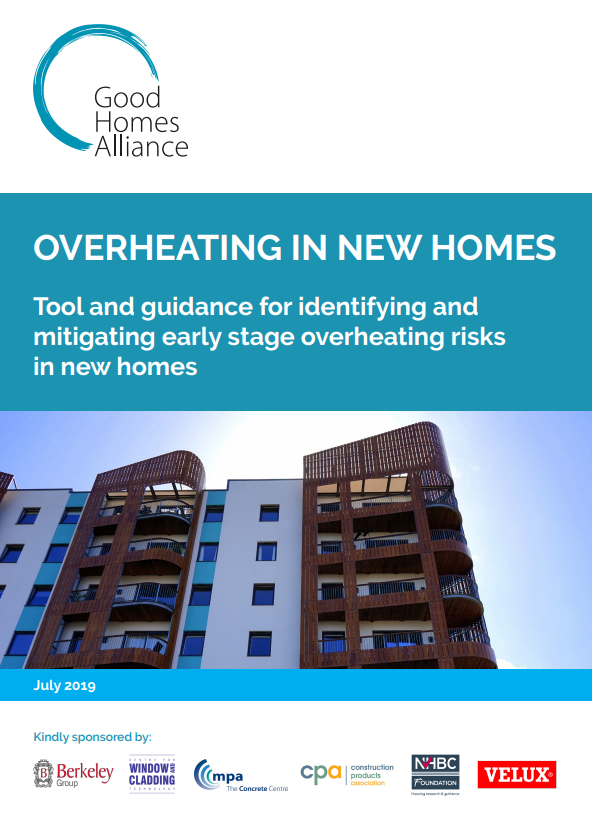The Good Homes Alliance created a toolkit on identifying indicators for overheating in homes, considering that overheating is set to increase with climate change.
The context behind this guidance
There is growing evidence that homes are at risk of overheating, and that this will increase with climate change.
This is currently only partially addressed in current tools and approaches, which typically focus on the detailed design stage and do not encourage sufficient consideration of early stage decisions such as site and dwelling layout, nor holistic consideration of overheating risk together with linked design issues such as ventilation and noise. Tools are also often limited in how they can take account of local design features, such as neighbouring green space.
This guidance intends to start an evolution towards more comprehensive approaches by providing guidance for early design stages. It is aimed at generalist stakeholders, including local authorities, as well as more technical designers.
About the toolkit
 The Good Homes Alliance created a toolkit on identifying indicators for overheating in homes, considering that overheating is set to increase with climate change. This toolkit provides 14 key questions that are key factors to tackling overheating and notably mention that providing cooling is not the solution. The toolkit also provides potential next steps, based on the level of risk estimated, as well as a detailed design guidance and risk assessment.
The Good Homes Alliance created a toolkit on identifying indicators for overheating in homes, considering that overheating is set to increase with climate change. This toolkit provides 14 key questions that are key factors to tackling overheating and notably mention that providing cooling is not the solution. The toolkit also provides potential next steps, based on the level of risk estimated, as well as a detailed design guidance and risk assessment.
This tool is intended for use at the early design stages of new residential development in order to identify key factors contributing to overheating risk, and possible mitigation measures. The tool consists of a scoresheet containing 14 questions with accompanying guidance notes for each question: how it identifies an overheating risk or mitigation factor, how to estimate the score, and related references for further reading. It is not meant to provide a detailed assessment, but instead to sit between existing high-level guidance, often aimed at policy makers, and detailed calculation and modelling tools, often aimed at architects and engineers. Ideally, it should be used collaboratively to prompt dialogue between project teams and local authorities, with disciplines including architecture, building services engineering, acoustics, and environmental health, among others.
The tool is informed by existing guidance, current research and feedback from occupied schemes. It covers early design decisions as well as site-related issues which can impact on overheating risk in practice and are often not covered in existing overheating tools and guidance documents, such as noise levels, blue/green infrastructure or other site characteristics.
